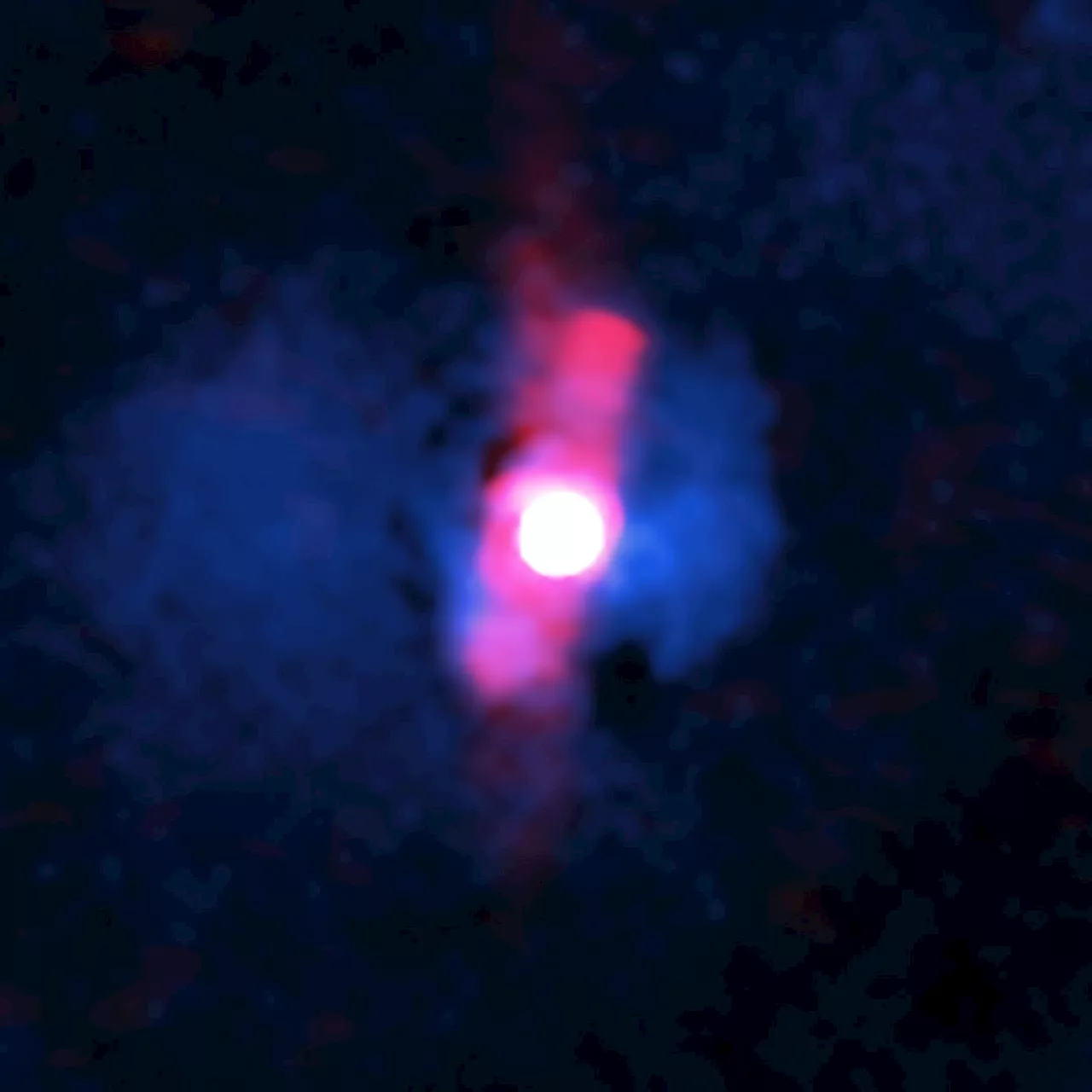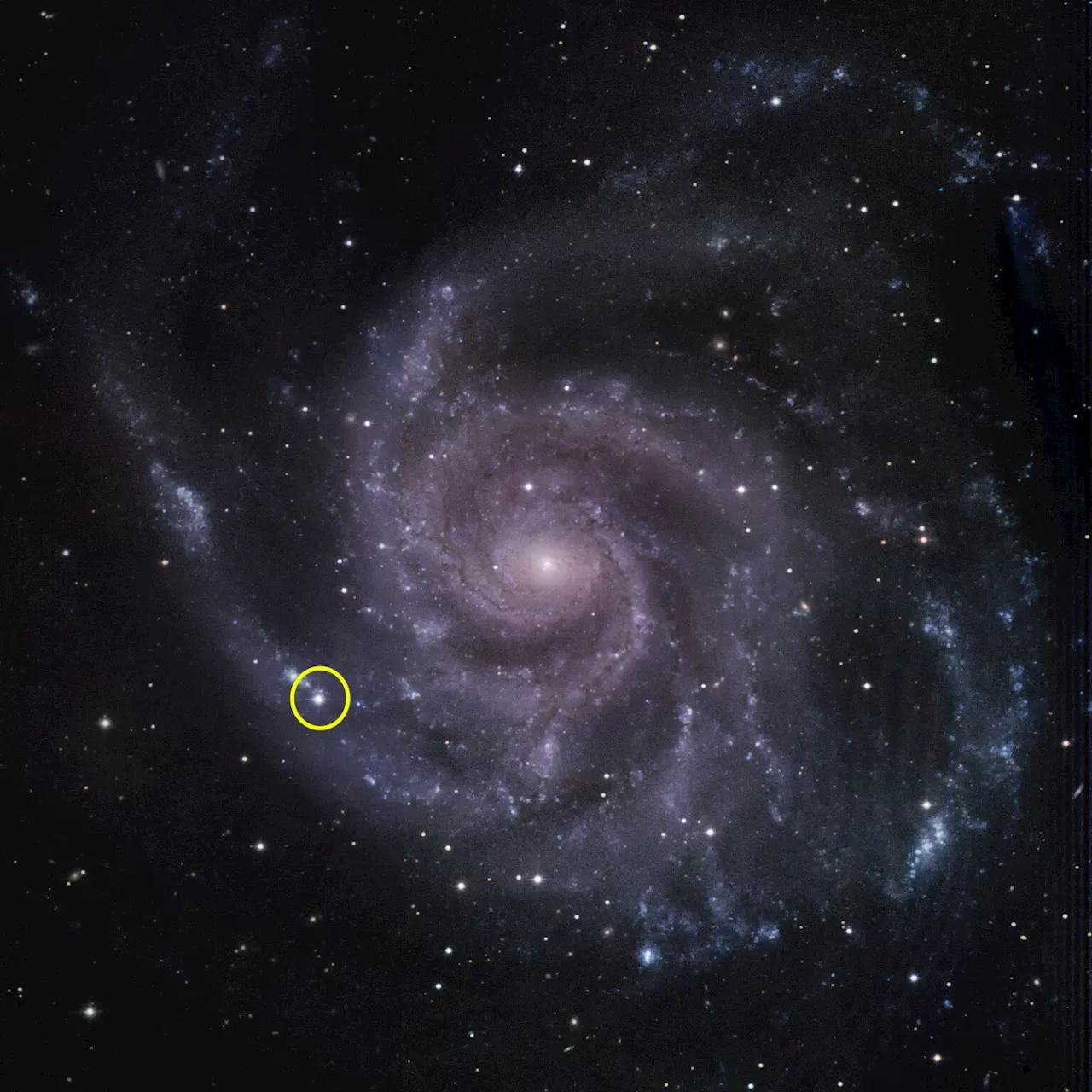Science, Space and Technology News 2024
The 2023 observation of supernova SN 2023ixf in the Pinwheel galaxy provided a unique chance to study cosmic ray production, but the expected gamma rays were not detected by NASA’s Fermi Telescope, indicating much lower energy conversion rates than anticipated. Credit: NASA
The Fred Lawrence Whipple Observatory’s 48-inch telescope captured this visible-light image of the Pinwheel galaxy in June 2023. The location of supernova 2023ixf is circled. The observatory, located on Mount Hopkins in Arizona, is operated by the Center for Astrophysics | Harvard & Smithsonian. Credit: Hiramatsu et al. 2023/Sebastian Gomez Astrophysicists have long suspected supernovae of being top cosmic ray contributors.
One theory proposes that supernovae may accelerate the most energetic cosmic rays in our galaxy in the first few days and weeks after the initial explosion.
United Kingdom Latest News, United Kingdom Headlines
Similar News:You can also read news stories similar to this one that we have collected from other news sources.
 Uninvited Guests: How Asian Honeybees Are Defying Evolutionary Expectations in AustraliaScience, Space and Technology News 2024
Uninvited Guests: How Asian Honeybees Are Defying Evolutionary Expectations in AustraliaScience, Space and Technology News 2024
Read more »
 Defying Expectations: NASA’s Chandra Uncovers a Quasar’s Surprising Galactic ImpactScience, Space and Technology News 2024
Defying Expectations: NASA’s Chandra Uncovers a Quasar’s Surprising Galactic ImpactScience, Space and Technology News 2024
Read more »
 Consumer Price Index Rises in March, Defying ExpectationsThe consumer price index and core consumer price index both increased by 0.4 percent in March, surpassing expectations. Core inflation remained at 3.8 percent for the second consecutive month. The annualized headline CPI stands at 4.6 percent, challenging the belief that inflation was under control based on previous data. This marks the fourth consecutive month of inflation exceeding forecasts.
Consumer Price Index Rises in March, Defying ExpectationsThe consumer price index and core consumer price index both increased by 0.4 percent in March, surpassing expectations. Core inflation remained at 3.8 percent for the second consecutive month. The annualized headline CPI stands at 4.6 percent, challenging the belief that inflation was under control based on previous data. This marks the fourth consecutive month of inflation exceeding forecasts.
Read more »
 3 Body Problem: Does The 'Dark Forest' Theory Solve The Fermi Paradox?The Best in Science News and Amazing Breakthroughs
3 Body Problem: Does The 'Dark Forest' Theory Solve The Fermi Paradox?The Best in Science News and Amazing Breakthroughs
Read more »
 NASA's Fermi mission sees no gamma rays from nearby supernovaA nearby supernova in 2023 offered astrophysicists an excellent opportunity to test ideas about how these types of explosions boost particles, called cosmic rays, to near light-speed. But surprisingly, NASA's Fermi Gamma-ray Space Telescope detected none of the high-energy gamma-ray light those particles should produce.
NASA's Fermi mission sees no gamma rays from nearby supernovaA nearby supernova in 2023 offered astrophysicists an excellent opportunity to test ideas about how these types of explosions boost particles, called cosmic rays, to near light-speed. But surprisingly, NASA's Fermi Gamma-ray Space Telescope detected none of the high-energy gamma-ray light those particles should produce.
Read more »
